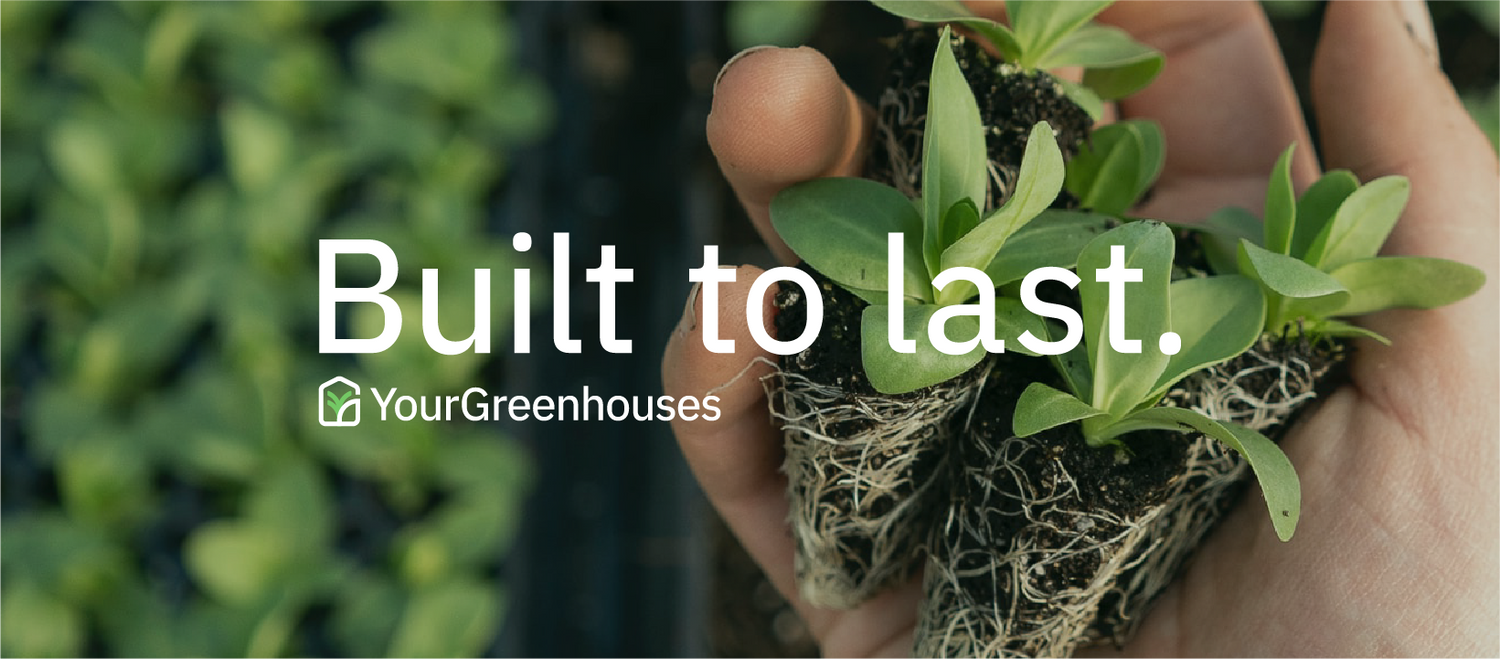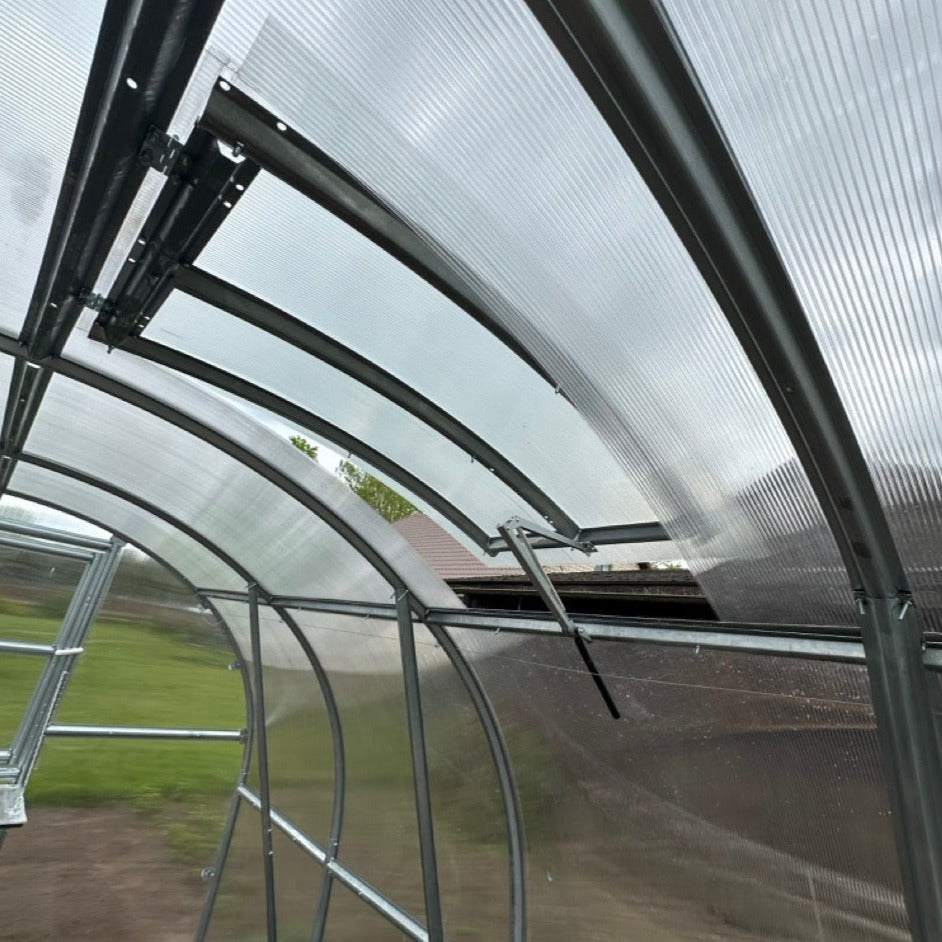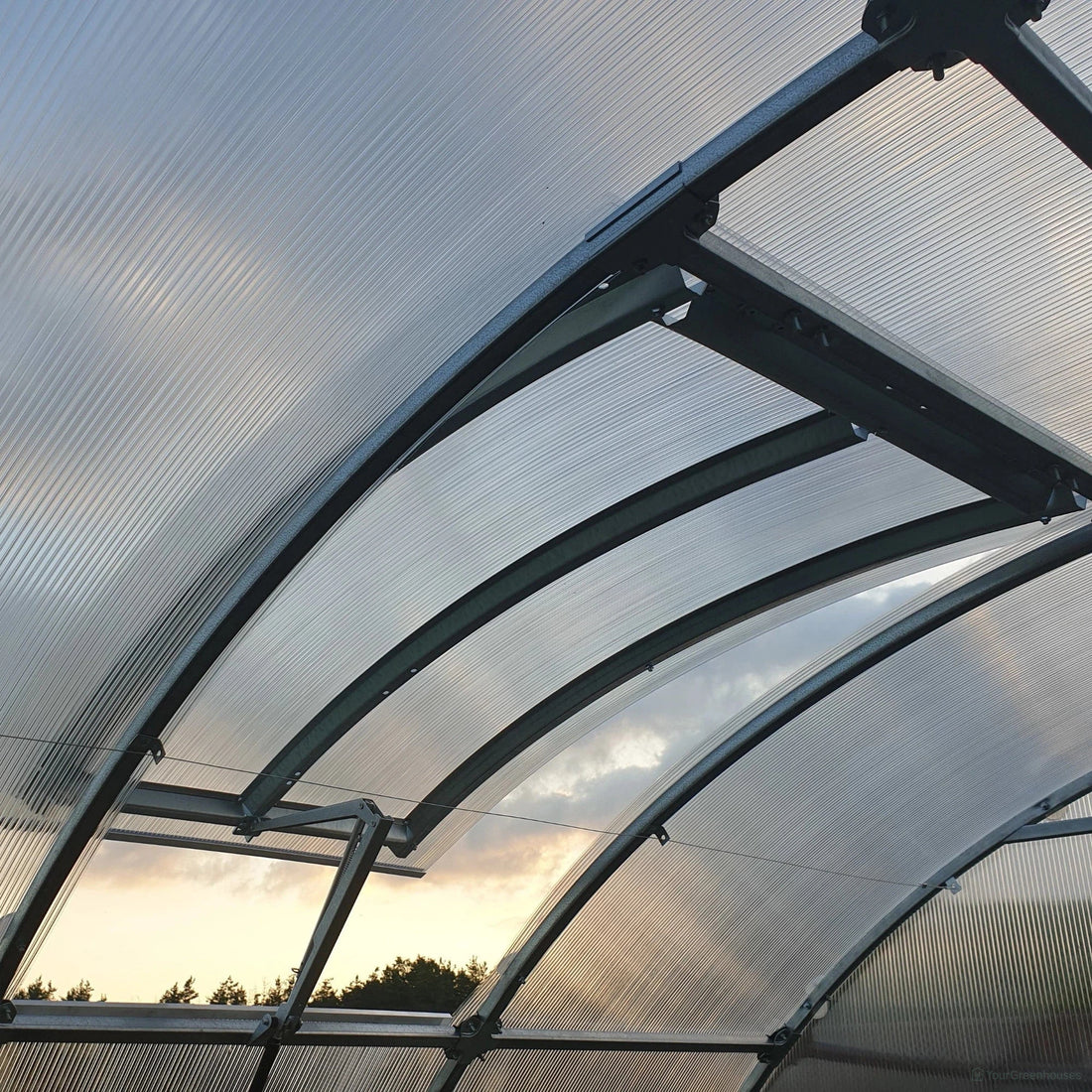Greenhouse Too Hot? How to Keep Your Greenhouse Cool in Summer
If you have a greenhouse, you know that solar energy can be kind of a double-edged sword. During the hottest part of the year, the word greenhouse for many people can mean oven or sauna.
While temperature is one variable greenhouse enthusiasts try to manage, the intense summer heat can certainly make it challenging.
The good thing is despite the rising temperatures outside; it’s possible to keep your greenhouse cool in summer.
In our guide below, we shall share some tips and tricks to use to cool your greenhouse.
*Check our guide on how to heat a greenhouse without electricity.
Can a Greenhouse Get Too Hot in Summer?
Yes, greenhouses do get hot in summer especially if not properly ventilated. Depending on the local climate, temperatures in a greenhouse can go as high as 90 degrees Fahrenheit.
Excessive heat is harmful to plants, and it's necessary to take adequate measures to cool your greenhouse.
5 Tips to Keep Your Greenhouse Cool in Summer
1) Regular Watering of Plants

Regular watering may seem a little bit obvious, but it’s one of the most effective ways of cooling your greenhouse.
You see, regular watering does more than flourish your plants and keep them healthy. It also helps to cool them down.
There are two main ways watering cools your greenhouse. First, it cools the soil and the surrounding, which ultimately cools your greenhouse.
The second way, and probably the main method is through transpiration. You see, when you water your plants, the roots absorb water, which is later expelled from the leaves to the surroundings in the form of moisture or vapor.
Transpiration keeps your plants from wilting and drying, while at the same time cooling your greenhouse on sweltering summer days.
2) Evaporative Cooling Systems
Evaporative cooling is an effective and energy-efficient method to cool greenhouses. As its name suggests, this method involves converting liquid water into vapor, which then absorbs heat from the air, consequently lowering the temperature.
The two main methods of evaporative cooling are:
· Misting Systems
A misting system releases fine droplets of water that helps to significantly reduce temperatures in your greenhouse. A little mist could drop the temperatures by 30 or more degrees F.
· Wet Wall and Fan System
A wet wall and fan system involves the circulation of air through wetted pads. This creates a cooling effect as air passes over the moist surface.
The biggest catch with the evaporative technique is that it works best in dry climates. In very humid regions, mist won't do anything since it won't evaporate.
3) Get Some Shade Cloth
The other line of defense against the scorching sun is shading your greenhouse. Shade netting blocks out some of the sun’s rays, thus reducing the intensity and amount of heat that gets in.
Shade cloth is available in different densities, depending on the amount of shade you need. An 80% shade cloth, for example, blocks out 80% of the sun rays, only allowing 20% in your greenhouse.
To use a shade cloth, simply tarp it away from the roof of your greenhouse, and be sure to leave at least one foot between the cloth and the greenhouse for air circulation. Alternatively, you could position it permanently above the greenhouse so that the sun is behind the cloth, especially in midsummer at noon.
4) Enhance Airflow with Fans
Another effective way of cooling down your greenhouse in summer is by improving the airflow with fans. But you must understand that fans don’t cool rooms/interiors. They only move air, and increase the rate of evaporative cooling on damp surfaces it hits.
You can, however, leverage their airflow to build a gentle wind tunnel in your greenhouse, which effectively cools down your gardening space. Design a method that moves high volumes of air to replace every cubic foot of air in your greenhouse faster than it heats up.
It’s simple. Install an intake fan at one end of your greenhouse, and an equally powerful exhaust fan at the opposite end. With both fans turned on, they’ll continuously replace all the air in the greenhouse every minute.
Continual replacement of air in your greenhouse has a couple of benefits. First, it creates a wind-like movement of air, which cools your plants. Secondly, continual replacement of air keeps the air/gas concentration in your greenhouse similar to the outdoors. Finally, moving fresh air over the leaves helps them breathe better.
5) Don’t Forget Greenhouse Ventilation
The other way of managing that in your greenhouse is improving ventilation. Proper ventilation helps with airflow and is responsible for bringing in fresh breeze from the outside while pushing out the stuffy warm air.
Ventilation of a greenhouse is as easy as opening your greenhouse windows and doors to allow fresh air to stream inside. You could also install vents or louvers on the roof or walls of your greenhouse to promote natural airflow.
While at it, you must ensure that the open spaces are covered with mesh netting to prevent bugs and insects from getting inside your greenhouse.
6) Use of Reflective Materials

Applying reflective shade paints and cool roof coatings to the exterior of your house can tremendously help with the cooling effect.
The reflective materials reduce heat absorption by reflecting a significant portion of the sun’s rays. And by minimizing heat absorption, these coatings contribute to maintaining a cooler environment inside your greenhouse.
7) Use of Thermal Screens
Thermal screens, also known as energy curtains, are retractable screens installed within the greenhouse structure. The screens can be drawn during the hottest parts of the day to provide shade and reduce heat radiation during the night.
Thermal screens are particularly useful in regions with extreme temperature fluctuations between day and night.
Frequently Asked Questions
What Temperature Should Your Greenhouse Be?
The ideal temperature for a greenhouse depends on the type of plants you are growing. Different plants have different temperature requirements for optimal growth.
However, a general guideline is to maintain a temperature range between 70°F and 80°F (21°C to 27°C) during the day and around 60°F to 70°F (15°C to 21°C) at night for many common greenhouse crops.
What Are Effective Strategies For Cooling A Greenhouse During The Hot Summer Months?
There are several effective strategies for cooling a greenhouse during the hot summer months. One of the most effective strategies is to provide proper ventilation. This can be achieved by installing vents or fans that can help circulate air throughout the greenhouse.
Another effective strategy is to use shade cloth to block out excess sunlight and reduce the temperature inside the greenhouse.
What Are The Best Practices For Maintaining A Cool Temperature In A Small Greenhouse?
The best practices for maintaining a cool temperature in a small greenhouse include proper ventilation, shading, and insulation.
It is also important to monitor the temperature inside the greenhouse regularly and make adjustments as necessary.
Are There Ways To Cool A Greenhouse Without Relying On Electrical Power?
Yes, there are several ways to cool a greenhouse without relying on electrical power. One such method is to use shade cloth to block out excess sunlight and reduce the temperature inside the greenhouse.
Another method is to use natural ventilation, such as opening windows or using a solar-powered fan. Additionally, using reflective materials on the greenhouse roof can help reflect sunlight and reduce the temperature inside the greenhouse.
Conclusion: Gearing Up a Greenhouse for Summer
Maintaining optimal conditions in a greenhouse during the summer requires a combination of effective strategies. Adding shade, improving ventilation, adopting evaporative cooling methods, and utilizing technology for automation are key components of a successful cooling plan.
By employing these techniques, growers can create a comfortable environment for their plants, promoting healthy growth and maximizing productivity even in the hottest months of the year.












